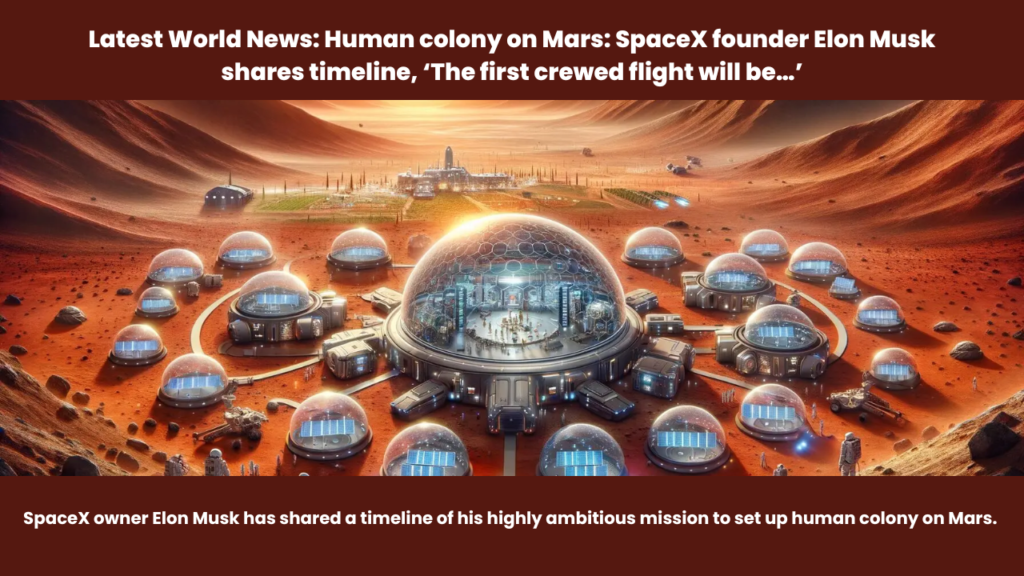SpaceX owner Elon Musk has revealed a timeline of the human civilisation’s journey to become multi-planetary after setting up a colony on Mars. In a recent social media post, Musk said that the first uncrewed Starship to Mars will be launched in two years when the next Earth-mars transfer window pens.

The tech billionaire, on Monday, reshared his interview on social media, in which he shared his optimistic approach towards the ultimate end of humanity. In the video, Musk called humans’ ability settle colony on another planet before something “cataclysmic happens” as the “fundamental test of human civilisation”.

In his previous social media post, Musk emphasized on the importance of a successful uncrewed mission to Mars and how they would define the future course of the plan.
If the uncrewed mission goes well, then the “first crewed flights to Mars will be in four years,” said Elon Musk on Saturday.
Elon Musk timeline for Human Colony on Mars
“The first Starships to Mars will launch in 2 years when the next Earth-Mars transfer window opens. These will be uncrewed to test the reliability of landing intact on Mars,” Elon Musk wrote in a post on X.

“If those landings go well, then the first crewed flights to Mars will be in 4 years. Flight rate will grow exponentially from there, with the goal of building a self-sustaining city in about 20 years. Being multiplanetary will vastly increase the probable lifespan of consciousness, as we will no longer have all our eggs, literally and metabolically, on one planet,” he added.
In another post on X, Musk stated that SpaceX created the first fully reusable rocket stage and made the reuse economically viable.

“SpaceX created the first fully reusable rocket stage and, much more importantly, made the reuse economically viable. Making life multiplanetary is fundamentally a cost per ton to Mars problem,” Musk posted on X.
“It currently costs about a billion dollars per ton of useful payload to the surface of Mars. That needs to be improved to USD 100k/ton to build a self-sustaining city there, so the technology needs to be 10,000 times better. Extremely difficult, but not impossible,” he added.
Help us make your experience better by Follow Us!


